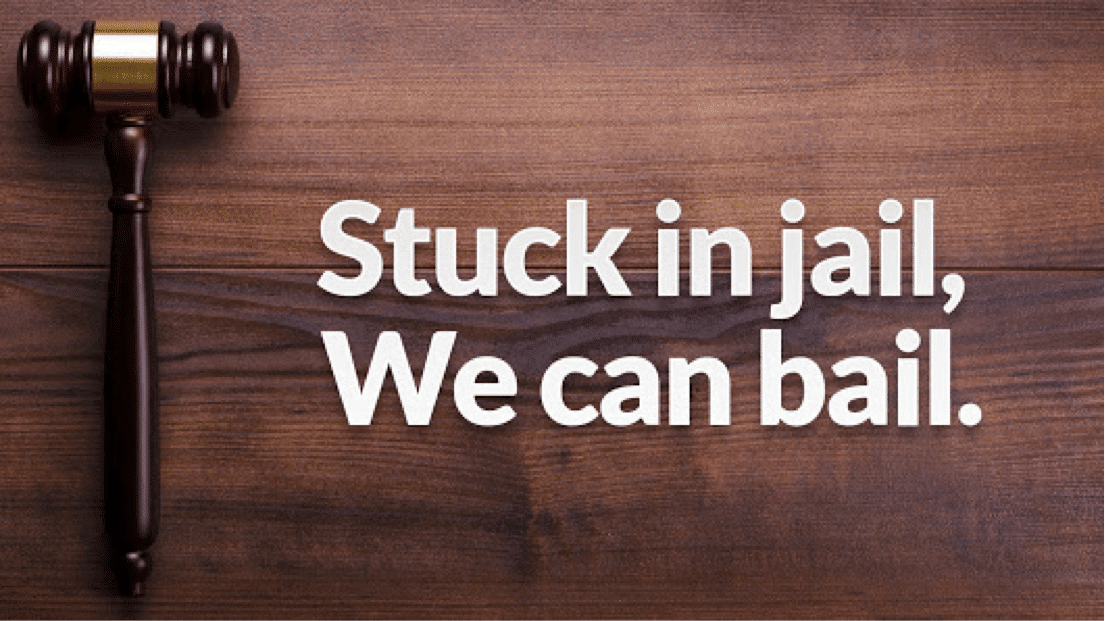Understanding Your Legal Rights When Making Use Of a Bail Bondsman
Understanding Your Legal Rights When Making Use Of a Bail Bondsman
Blog Article
Just How Bail Bonds Work: A Detailed Summary
Bail bonds play an essential function in the lawful process by providing a mechanism for individuals to safeguard their release from custodianship while awaiting test. Understanding the complexities of how bail bonds operate, including the duties of courts, bail bondsmensman, and the various charges involved, can be essential for anyone browsing this complex system. As we discover the different types of bail bonds and the factors that influence their costs, it ends up being noticeable that the obligations tied to these contracts expand far beyond plain financial purchases. What implications do these obligations hold for defendants and their households?
What Are Bail Bonds?
Bail bonds are typically utilized in the criminal justice system as an economic warranty that an accused person will show up in court as needed. When an individual is arrested, a court might set a bail quantity based on various elements, consisting of the extent of the offense, the offender's criminal history, and the threat of trip. They may seek the assistance of a bail bondsman. if the charged can not pay for the bail quantity - Los Angeles Bail Bondsman.
A bail bond is a contract between the accused, the bondsman, and the court, making sure that the defendant will fulfill their legal commitments. In exchange for a cost, commonly a portion of the overall bail amount, the bail bondsman gives the court with a surety that assures the bail. If the implicated fails to show up in court, the bail bondsman is in charge of paying the full bail quantity to the court, which might lead them to seek the offender for recuperation.
Bail bonds offer to promote the release of individuals waiting for trial, allowing them to preserve their employment and family responsibilities while ensuring compliance with court looks. This system is essential to balancing the rights of the accused with the rate of interests of public security and judicial stability.
The Bail Process Described
After recognizing the duty of bail bonds in the criminal justice system, it is crucial to lay out the bail process itself. When a person is arrested and taken right into custodianship, the bail process begins. Adhering to the arrest, the defendant is typically brought prior to a court for a first hearing, where the judge will figure out whether to grant bail and established the amount.
If bail is given, the defendant has a number of options to safeguard their release. They may pay the complete bail amount in cash, which is returned upon the completion of their court commitments. Alternatively, the defendant can look for the help of a bond bondsman, who bills a non-refundable cost-- typically a percentage of the complete bail quantity-- to upload bail on their part.
Once bail is uploaded, the defendant is launched from protection with the understanding that they should attend all arranged court appearances. Stopping working to appear can result in the forfeiture of the bail and extra lawful consequences. The procedure concludes when the situation is solved, at which aim the bail is either returned or maintained by the bondsman as repayment for their solutions.

Types of Bail Bonds
When it comes to protecting a release from guardianship with bail bonds,Various options exist. Understanding the various types can assist defendants and their family members make notified choices.
One of the most common kind is the guaranty bond, which includes a third-party bail bondsmansman who ensures the full bail amount to the court in exchange for a non-refundable charge, typically around 10% of the bail amount. This choice is commonly used due to its ease of access for individuals who might not have the economic ways to pay the complete bail upfront.
Another kind is the cash money bond, where a co-signer or the offender pays the overall bail quantity in cash money straight to the court. Upon effective conclusion of the situation, the funds are reimbursed, minus any appropriate costs.

Finally, migration bonds are particularly developed for individuals restrained by migration authorities, facilitating their release while they await legal procedures. Each sort of bail bond serves distinctive functions, accommodating different conditions and requires within the lawful system.
Factors Impacting Bail Expenses
Several essential variables affect the total cost of bail, determining just how a lot an offender or their family may require to spend for launch. One of the main find more elements is the severity of the charges. Felony charges usually result in greater bail quantities contrasted to offenses because of the regarded threat of flight and the possible consequences of the violation.

The offender's monetary scenario can also impact the bail quantity. Courts might take into consideration an accused's revenue and assets when establishing bail, potentially resulting in greater costs for those with greater funds. The availability of collateral may impact the needed repayment. If a bond bondsman perceives a greater risk, they might establish a greater premium, more increasing the expenses related to securing a bail bond. Comprehending these aspects can aid defendants and their family members prepare for the economic implications of protecting bail.
Responsibilities of the Indemnitor
Once bail has been safeguarded, the duties of the indemnitor, or the person who accepts back the bail bond, entered into play. The indemnitor is mostly liable for ensuring that the offender participates in all arranged court appearances. Failure to do so might cause the loss of the bail bond and prospective legal repercussions for the indemnitor.
In addition, the indemnitor is obligated to pay off the bail bond company the total of the bond if the accused falls short to show up in court. This includes any fees or expenses incurred by the bail representative in recovering the accused, which might even more escalate the financial worry on the indemnitor.
The indemnitor needs to also maintain open interaction with both the offender and the bail bondsman, providing any type of essential updates related to the offender's scenario. It is essential for the indemnitor to stay familiar with the lawful commitments and effects related to the bail bond, as ignorance might bring about unintended liabilities.
Conclusion
In his response summary, bail bonds serve as a crucial device within the criminal justice system, promoting the release of offenders while ensuring their look in court. Comprehending the numerous kinds of bail bonds, the details of the bail process, and the elements influencing bail expenses is necessary for navigating this facility landscape. In addition, recognition of the responsibilities birthed by the indemnitor highlights the importance of informed decision-making when involving with bail bond solutions.
Understanding the ins and outs of exactly how bail bonds operate, including the functions of courts, bail bondsmen, and the various charges included, can be essential for anyone navigating this intricate system.After comprehending the role of bail bonds in the criminal justice system, it is essential to detail the bail process itself. The defendant can look for the aid of a bond bondsman, that charges a non-refundable cost-- normally a percentage of the overall bail quantity-- to publish bail on their part.
If a bail bondsman views a higher internet threat, they might set a greater premium, further increasing the expenses associated with protecting a bail bond. Recognizing the various kinds of bail bonds, the ins and outs of the bail process, and the variables affecting bail costs is vital for navigating this complex landscape.
Report this page